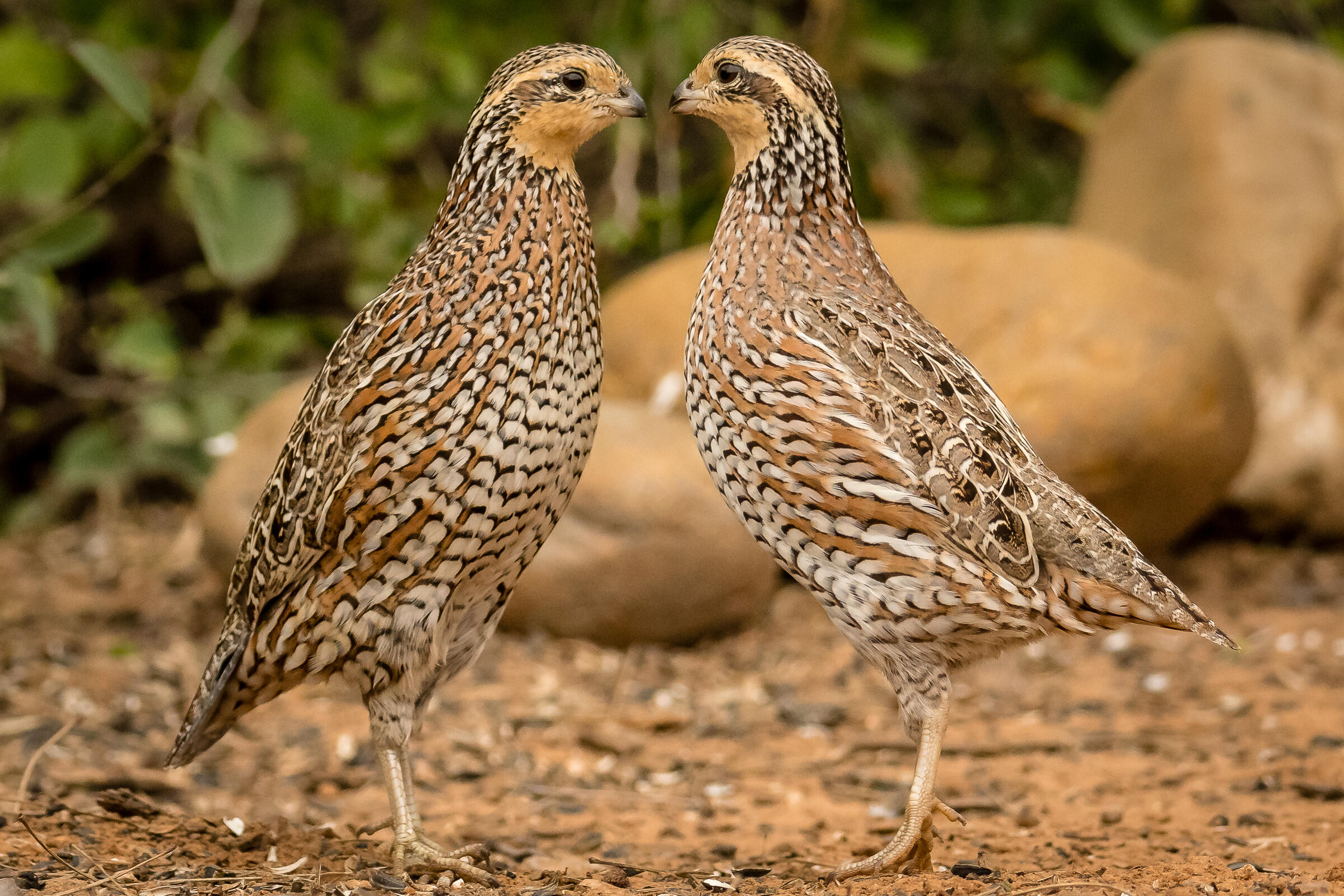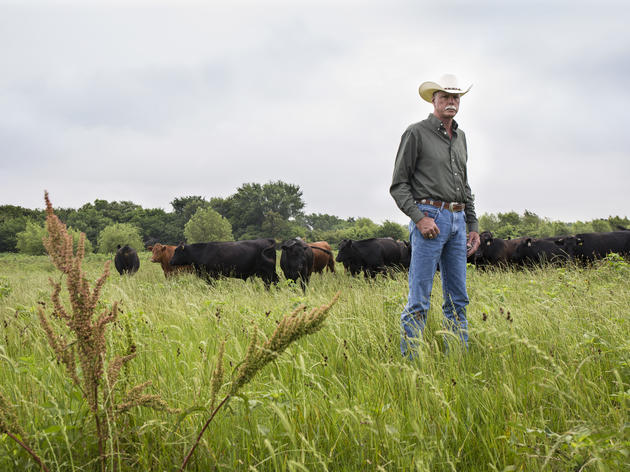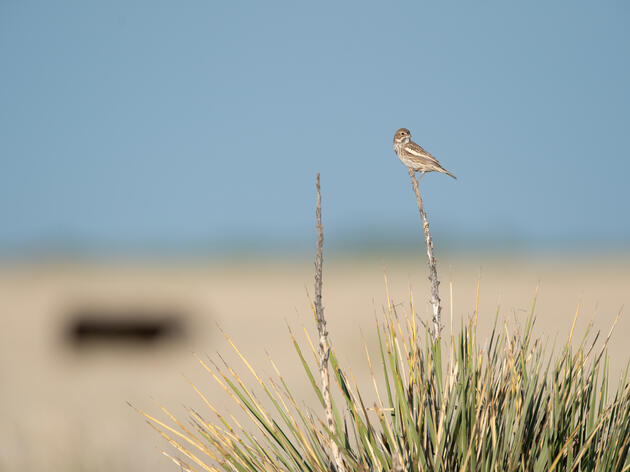There are many organizations across Texas ready to assist you with both technical and financial aspects of conservation projects. For in-person help with these resources, please contact Audubon Conservation Ranching.
State Programs
Texas Forest Service: Texas A&M Forest Service not only serves the state through emergency response, but also provides technical and financial assistance to landowners. Learn more about what the Texas A&M Forest Service has to offer.
- Southern Pine Beetle Prevention Cost Share Program: Texas A&M Forest Service, through funding from the USDA Forest Service, offers cost assistance to qualifying landowners to implement conservation practices to prevent or minimize Southern Pine Beetle infestation. Learn more about the program and to determine your eligibility.
- Forest Legacy Program: This program is a voluntary cooperative effort between the U.S. Forest Service and the State of Texas that works to conserve ecologically important forests in Texas through conservation easements. If you have qualifying land that you wish to remain in its natural state, the U.S. Forest Service will fund 75% of the easement purchase cost. Learn more about the program and conservation easements.
- Forest Stewardship Program: In this program, professional foresters with Texas A&M Forest Service and other Organizations will help you plan your long-term management goals for your unique property. Together, you will create a written 10-year plan that outlines steps to achieve your goals and objectives. Learn more about the Forest Stewardship Program or to get in touch with a professional forester.
- Texas Longleaf Conservation Assistance Program: This program provides both financial and technical assistance to eligible landowners for the establishment, enhancement, and management of Longleaf Pine in Texas. Get more information and to determine your eligibility for cost assistance.
- Oak Wilt Suppression Project: This project allows landowners to receive partial funding for efforts to stop the spread of oak wilt, a devastating fungal disease of red oaks and live oaks. Texas A&M Forest Service offers technical and financial assistance, up to 40% of the cost, to remove infected red oaks and trench around infected oaks to stop the expansion of oak wilt centers. Learn more
- Joint Chief’s Landscape Restoration Partnership: This partnership between Texas A&M Forest Service, USDA Forest Service, Natural Resources Conservation Service, and the National Wild Turkey Federation seeks to reduce wildfire threat and improve forest health and water quality in the Sam Houston National Forest and surrounding private forests. If you are in the area and would like to apply for cost assistance, click here.
- Neches River and Cypress Basin Watershed Restoration Program: This program provides financial assistance from Texas A&M Forest Service and US Fish and Wildlife Service to landowners in the Neches River and Cypress Basin Watershed area. Cost assistance is available for landowners using prescribed fire to improve water quantity and quality, control invasive species, and enhance wildlife habitat. Explore the program and your eligibility.
Texas Parks and Wildlife Department: Texas Parks and Wildlife Department works diligently to protect and conserve wildlife across the state of Texas. Not only do they provide public outdoor recreational opportunities by managing and protecting wildlife and wildlife habitat, but they also have several programs to assist private landowners with conservation activities. Learn more about what TPWD has to offer.
-
1-D-1 Wildlife Tax Valuation: A Wildlife Tax Valuation can serve as a great alternative to Agricultural Valuations. A Wildlife Valuation allows landowners to keep the same low Agricultural Tax Valuations on their property but regain flexibility in their agricultural operation. Landowners with existing Ag Valuations may convert to a Wildlife Valuation by agreeing to a schedule of wildlife habitat management activities meant to improve the health of our native Texas flora and fauna. Learn more about the Wildlife Valuation process here.
-
Pastures for Upland Birds: This program offers cost assistance and technical guidance to landowners in the east-central Texas area looking to restore farm fields and pastureland back to native prairie grasses. TPWD will work with landowners to provide technical guidance, herbicide, native grass and forb seed mixes, and even a no-till seeder when available. They will also provide a project plan to ensure the success of your prairie restoration. Click here to view the programs focus area and learn more about Pastures for Upland Birds (PUB).
-
Landowner Incentive Program: TPWD’s Landowner Incentive Program provides technical and financial support to private landowners looking to improve their wildlife habitat. Land managers will contact their local wildlife biologist and build a habitat management plan that fits their goals and objectives. Learn more about the Landowner Incentive Program.
- Texas Prairie Wetlands Project: The Texas Prairie Wetlands Project is a joint cooperative effort between Texas Parks and Wildlife Department, Ducks Unlimited, U.S. Fish and Wildlife Service, and the Natural Resources Conservation Service. Its purpose is to provide technical and financial assistance to landowners in the gulf coast prairies with 5+ acres of surface water that wish to restore, enhance, manage, and/or create wetlands as well as plantings that will benefit waterfowl and other migratory birds. Learn more about the program and determine your eligibility.
- Technical Guidance Program: If you are looking to improve your wildlife habitat, management technique, or conserve threatened and endangered species look no further than TPWD’s technical guidance program. This free, voluntary program allows landowners and managers to work directly with a TPWD wildlife biologist to create habitat management plans that work towards their goals and objectives. Learn more about TPWD’s technical guidance opportunities and to get in touch with your local biologist.
- Texas Playa Conservation Initiative: Playa wetlands are essential to our functional panhandle ecosystem, and thanks to the Texas Playa Conservation Initiative restoring playa lakes can have even more benefits for landowners. This cooperative program between Texas Parks and Wildlife, Playa Lakes Joint Venture, Natural Resources Conservation Service, US Fish and Wildlife Service, Ducks Unlimited, and Texan by Nature allows landowners to receive per-acre payments for restoring their playa lakes and keeping them intact. Learn more about the program.
Texas State Soil and Water Conservation Board: The Texas State Soil and Water Conservation Board is the state agency responsible for administering soil and water conservation law and coordinating conservation and pollution abatement programs. They also offer technical and financial assistance to landowners looking to benefit their natural resources. Learn more about their programs below.
- Water Quality Management Plan: A water quality management plan allows landowners to receive cost share for installing practices that improve water quality and quantity throughout their watershed. Learn more about the program and get started.
- Feral Swine Control Pilot Program: This program is designed to help landowners control feral hog populations and minimize their threat to agriculture, ecosystems, and the health of humans and animals. Landowners are loaned “smart traps” to utilize on their property in an attempt to reduce populations. Learn more and see if your county is eligible.
Federal Programs
Farm Service Agency: The Farm Service Agency helps support farmers and ranchers with programs such as disaster relief, conservation programs, commodity price guarantee programs, and loan programs. Learn more about their conservation opportunities below.
- Conservation Reserve Program: The Conservation Reserve Program is a voluntary program that offers per acre annual payments as well as technical assistance for farmers to return farmed fields to native grass plantings. Farmers enroll for 10-15 years, and in that time work to benefit water quality, reduce soil erosion, and reduce loss of wildlife habitat. Learn more about CRP.
- Continuous Conservation Reserve Program: The Continuous Conservation Reserve Program incentivizes the use of buffers, windbreaks, filter strips, and field borders by offering annual, per-acre payments to farmer looking to improve the functionality of their fields. Learn more about your opportunities with CCRP.
Natural Resources Conservation Service: The USDA’s Natural Resources Conservation Service provides financial and technical assistance to producers across the United States. See what programs and opportunities may be available.
- Conservation Stewardship Program: The NRCS’ Conservation Stewardship Program is aimed at supporting landowners and managers who want to build on their existing conservation efforts while strengthening their operation. The CSP provides annual payments in return for a number of best management practices selected by the operator. Learn more and get started with CSP.
- Environmental Quality Incentive Program: The NRCS’ Environmental Quality Incentive Program is designed to help lessen the cost burden on land managers applying conservation practices. Operators can work with local NRCS Specialists to choose from hundreds of cost share eligible practices and design a conservation plan to fit their goals and objectives. Learn more about EQIP.
- Agricultural Conservation Easement Program: The Agricultural Conservation Easement Program, which includes the Wetlands Reserve Easements and Agricultural Land Easements, help landowners protect and restore their land by limiting conversion to non-agricultural uses. NRCS will work with landowners to develop conservation plans that will restore ecosystem function among working lands, all while cost sharing the easement purchase price. Learn more about the Agricultural Conservation Easement Program.
- Conservation Technical Assistance: Of course, the NRCS also offers free technical guidance to farmers and ranchers looking to conserve and benefit their natural resources. Find more information and to get in touch with your local NRCS representative.
US Fish and Wildlife Service Programs: The United State Fish and Wildlife Service offers multiple technical and financial assistance programs to private landowners, expanding their capacity to conserve, protect, and enhance native fish and wildlife and their habitat. Click here to learn more about their programs.
- Coastal Program: Open to landowners in coastal regions of the state, this program serves to provide financial and technical assistance to landowners to help protect coastal habitat through conservation easements and acquisition. Learn more about the program.
- Partners for Fish and Wildlife Program: This voluntary program provides free technical and financial assistance to landowners interested in improving wildlife habitat on their land. Landowners consult with USFWS biologists to create a project plan that meets their own goals and improves conditions for wildlife. Get started restoring your acres today.
- Safe Harbor Agreements: Safe Harbor Agreements are voluntary agreements between landowners and USFWS that allow landowners who actively contribute to the recovery of federally listed species on their land to be shielded from further land use restrictions under the Endangered Species Act. Learn more about Safe Harbor Agreements
Migratory Bird Joint Ventures
Migratory Bird Joint Ventures are cooperative, regional partnerships between Federal, State, and non-profit conservation organizations throughout North America. There are 5 habitat-based joint ventures in Texas that all individually work to implement conservation strategies benefiting birds, other wildlife, and people.
Gulf Coast Joint Venture: The (GCJV) is a partnership between Federal and State Agencies, non-profit organizations, and private landowners dedicated to bird habitat conservation planning and evaluation along the Gulf Coast. Learn more about the GCJV and their habitat conservation projects, click here. (https://www.gcjv.org/about_us)
Lower Mississippi Valey Joint Venture: The LMVJV works to coordinate the most efficient and effective conservation delivery in east Texas, advancing the science behind large-scale bird habitat management. To learn more about LMVJV and landowner programs, click here.
Oaks and Prairies Joint Venture: OPJV operates in the Edwards Plateau and Oaks and Prairie’s regions of Texas to ensure sustainable bird populations through planning and facilitating habitat conservation, research, and outreach. To learn more about OPJV, click here.
- GRIP Program: The Grassland Restoration Incentive program is a multi-organization partnership program in Texas and Oklahoma aimed at combatting the steep decline of grassland bird species. GRIP is designed to offer another source of cost-share funding to landowners in eligible counties wishing to improve their habitat through brush management, prescribed burning, range planting, and a number of other beneficial practices. Click here to learn more about GRIP eligibility and practices as well as find your local OPJV point of contact.
Playa Lakes Joint Venture: The PLJV is a non-profit organization dedicated to conserving the playas and prairies within the Texas Panhandle to benefit birds, other wildlife, and people. Playa lakes are essential habitat components of many wildlife species, and serve as major sources of groundwater recharge. PLJV works to restore and maintain these pertinent habitats along with other wetlands and grasslands through science, conservation planning, and on the ground action. To learn more about PLJV landowner resources, click here.
Rio Grande Joint Venture: The RGJV is a public-private partnership working to plan, implement, and monitor conservation action and science in the Rio Grande valley and surrounding areas. They collaborate with GRIP, LIP, and Partners for Fish and Wildlife Program to bring landowners cost assistance for conservation efforts. To learn more about what RGJV offers landowners, click here.
Non-Governmental Organizations
Audubon Texas: Audubon Texas offers assistance to Texas landowners through educational workshops, technical guidance, conservation partnerships, and participation in the Audubon Conservation Ranching Program. To learn more about the program and how Audubon can help you, contact us at audubontexas@audubon.org and visit our website.
Ducks Unlimited: Ducks Unlimited offers technical and financial assistance to individuals and organizations working to restore, protect, or enhance wetland habitat through their Maximizing Aid to Restore State Habitat Program. To learn more about their program, contact the Ducks Unlimited Texas Field Office at (832) 595-0663 or visit www.ducks.org
Texas Agricultural Land Trust: Want to explore conservation easements? The Texas Agricultural Land Trust is an accredited land trust that promotes the conservation of open spaces and natural resources on private working lands. To learn more about conservation easements and TALT’s process, visit https://www.txaglandtrust.org/
Wildlife Habitat Federation (WHF): The Wildlife Habitat Federation provides on the ground management, restoration, and habitat conservation to landowners throughout the state. Through their conservation planning and assistance program, WHF will work with you to plan and fund your habitat improvement and restoration efforts. To learn more about WHF and apply for their programs, click here.
How you can help, right now
Join Audubon Texas Today
Becoming a member supports our local work protecting birds and the places they need.
Consider a Legacy Gift for Texas
Planned gifts and bequests allow you to provide a lasting form of support to Audubon Texas.
Subscribe to Our Newsletter
Subscribe to our newsletter for updates about Audubon Texas's conservation work, and news about our activities and local events.






